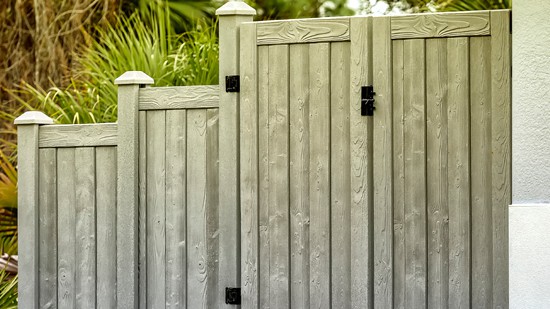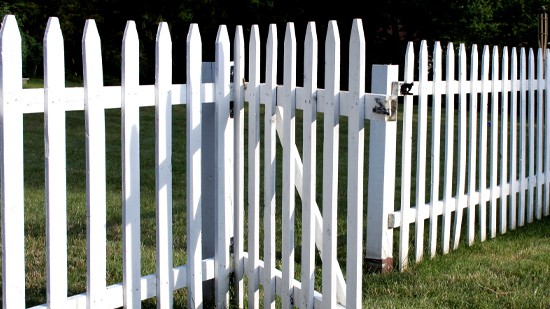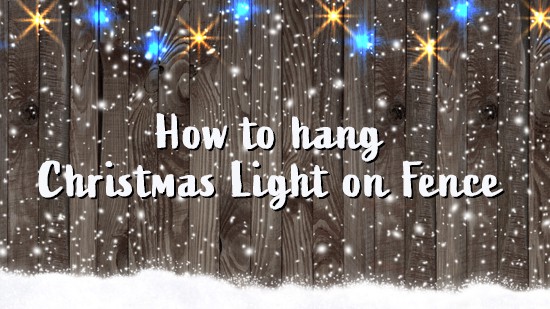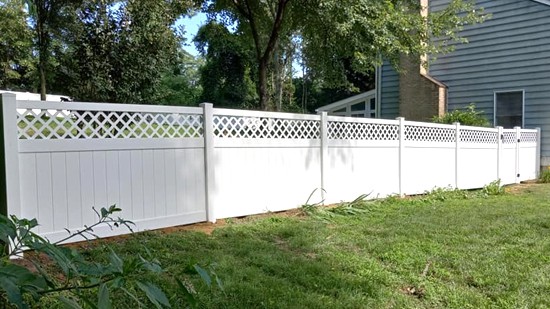Even the simplest of wood fence Options looks elegant, refined and classy, but that doesn’t mean you have to limit your options to “simple.” There are plenty of customization options that can take your wood fencing to the next level. In this guide, we will explore some popular add-ons for wood fence options so you can personalize your perimeter in the future.
Steel Fence Posts
We always recommend steel fence posts instead of pressurized wood fence posts. Steel poles are much more durable against wind, diagonal rain, hail, snow, and general wear and tear. Wood posts absorb moisture, causing them to expand and contract with the weather. This can alter the shape of your fence over time and it weakens the structural integrity of the fence. With steel posts, you don’t have to worry about those issues.
Upgrading to steel is a minimal price increase, and the posts pay for themselves over the lifetime of your fencing. Contact All Around Fence, LLC to get a quote for your wood fence installation.
Batten Board Fencing (Or Board-on-Board Wood Fence Options)
Batten board fencing includes small strips of wood to cover the gaps between the pickets. This give the fencing an extra level of privacy and provides a decorative add-on to enhance the design. Instead of a traditional flat fence, a batten board wood fence has depth and dimension. Batten board fencing is typically capped with a flat board along the top.
An alternative to batten board fencing is board-on-board fencing. This style uses full-sized pickets to cover the gaps instead of thin strips of board. In either case, the cap at the top acts as a crown to bring everything together. As your fence ages, the gaps between the pickets will grow wider, but the batten boards or board-on-board pickets will help conceal that.
Cap Tops
We briefly mentioned cap tops above when discussing batten board wood fence options. Cap tops can be used for any wood fencing though, even if it does not have batten boards running along the seams. The cap creates the same effect as crown molding in an interior room. It is not necessary from a structural perspective, but it does make the fencing look cleaner and more expensive. If you do not like the curved tops on your fence pickets, you could get a cap to cover that. Cap tops can add a small amount of height to the fencing, but they are primarily used for decorative purposes.
Lattice Fence Tops
Lattice is another decorative add-on for wood fence options. In this case, a cap is used to cover the top of the pickets, and then a row of lattice is added above that. The lattice is completed with another cap on top so everything looks clean and cohesive.
You can use lattice for decoration and to add height to your fencing. If you want to keep your fencing semi-private, you could start the lattice at a lower height. For instance, you may use four-foot pickets and use lattice for the top two feet of a six-foot fence. This would let in more light and create more visibility, if desired.
Wood Fence Stain
Wood fence stains serve several purpose. Not only can they change the color of a wood fence (new or old), but they can also add a layer of protection so the fence stands up better to the elements. We recommend for most wood fences to be stained every three years or so. This extends the life of the fencing and keeps it looking new. Depending on the type of wood you used or the amount of precipitation in your area, your fence may need to be stained more or less frequently than that. Contact the team at All Around Fence, LLC to learn more about fence staining or any of the wood fence add-ons mentioned here.





